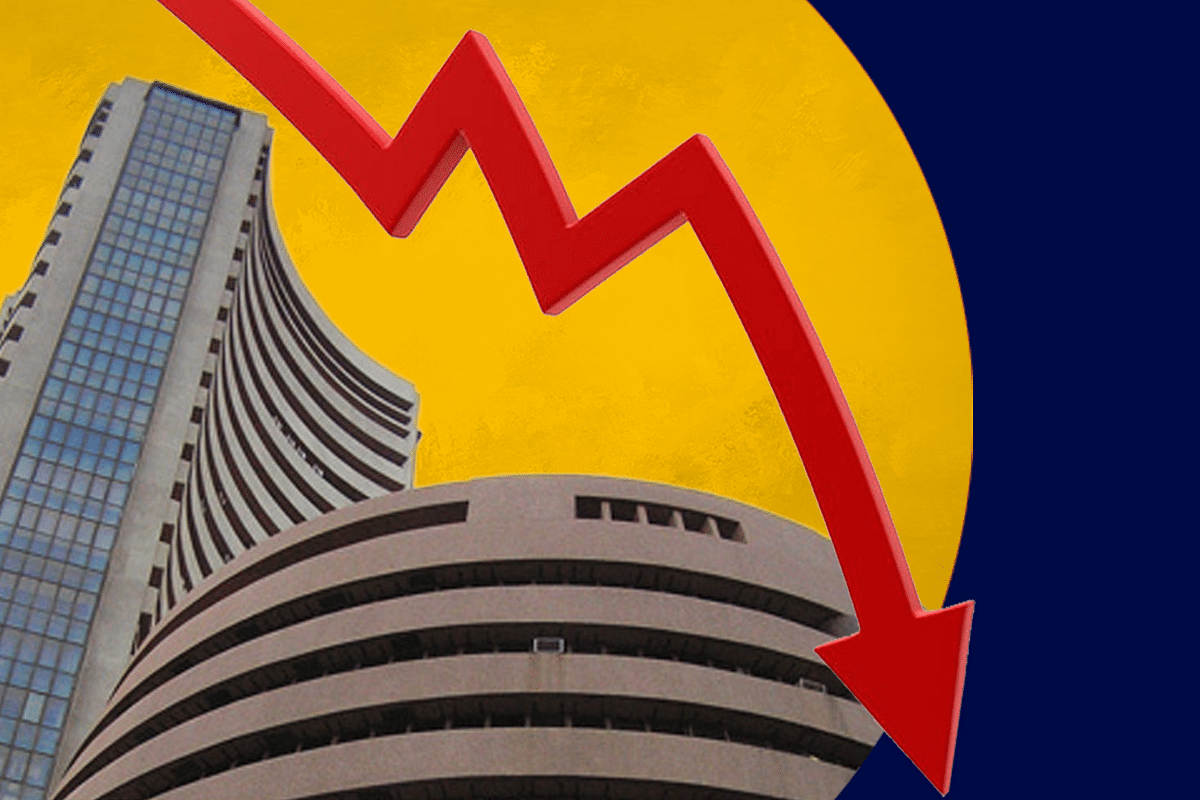Economy
Stock Crash: Rebalancing Could Be A Better Option Than A Rush To The Exits
- As the markets see a major decline, rebalancing priorities seems to be the best way forward for investors.

The Bombay Stock Exchange. (BSEINDIA/Wikimedia Commons)
It is necessary to take the drumbeats of retreat on the stock markets with some degree of equivocation. This is not the end of the party, nor should one conclude that the markets will bottom out soon and the festivities will resume soon.
Consider just two headlines in The Economic Times today (25 January 2022). One talked of “That sinking feeling”, which was essentially about the Sensex’s 1,546-point drop on Monday, aided by selling by foreign institutional investors (FIIs). On the other hand, Swiggy, the food and essentials delivery service, raised $700 million in venture capital funding at a massive valuation of $10.7 billion. Now contrast the current valuation of Swiggy’s listed competitor, Zomato, which has a market capitalisation of just under Rs 74,000 crore – which is less than $10 billion.
So, what’s going on. Why are the private equity markets sending different signals from what we are seeing in the secondary markets?
The one-line answer, even at the cost of some over-simplification, is that the market as a whole is rebalancing priorities. Investors are rebalancing between equity and debt, between growth and value stocks, between the primary and secondary markets, and between short-term and long-term bets.
This is happening because of the resurgence of global inflation. The US inflation rate is at a 40-year high of 7 per cent; the eurozone inflation rate is the highest in its history at 5 per cent; British inflation is similarly placed. The Bank of England has already started raising rates. India’s own retail inflation hit 5.59 per cent in December 2021, just a stone’s throw away from the 6 per cent upper limit which will call for liquidity tightening and rate hikes.
Since all central banks, and especially the US Fed, are now expected to start acting against inflation, investors are rebalancing their books, especially between equity and debt, since interest rates have nowhere to go but up in most countries.
The second type of rebalancing, also related to inflation, relates to the shift from growth to value (or even defensive) stocks. Value stocks, or those whose earnings are on a sounder footing than growth stocks, will gain (or lose less) in a situation where a broader rebalancing is happening. Many newly-minted, consumer-facing tech stocks in India, including Zomato, Paytm, PB Infotech (PolicyBazaar) and CarTrade, have dropped 20-50 per cent from their listing or issue prices.
The disconnect between high private equity valuations and falling valuations in comparable listed stocks relates to one reality: private equity or venture funding is long-term in nature, and hence can be called patient capital. Listed stocks have an in-built bias towards short-termism. A fundamental change in liquidity or anticipated tightening of monetary conditions can lead to a quick cashing in of gains or a reduction of losses. A lot of the selling in tech and growth stocks relates to the exit of anchor investors whose lock-in period is over, or about retail investors panicking over the sharp drop in valuations.
Is it then time for retail investors to rebalance their own portfolios? They should obviously consult the experts, but commonsense tells me the following:
One, if your preferred allocation is now too skewed towards one asset class (say 70 per cent equity and 30 per cent debt when your original preference was for 50:50), you should seek rebalance in stages.
Two, instead of selling growth stocks at huge losses, I would reduce or rebalance by investing incremental savings in value stocks or in debt or gold. Growth stocks can be shed if, and only if, you believe that they are no longer growth stocks.
Three, don’t hold on to your long-term and future losers by falling prey to the 'anchoring effect' or 'loss aversion'. The anchoring effect tells us that if you bought a share at, say, Rs 100 and the price is now Rs 50, you will sit tight hoping the price moves closer to your mental price of the share. Loss aversion relates to the basic human tendency to avoid losses rather than going for an equivalent gain. So do take a loss if the future of your preferred share now looks bleaker than before. This will teach you to not fall in love with any share. Shares are only as good as what they can deliver in terms of returns over the long term.
Four, and this is important, the relationship between inflation and stock prices is not cast in stone. In general, rising interest rates tend to dent stock discounting rates, but there are times when the reverse happens. During the period of rising inflation in India between 2004 and 2012 (and further), the Sensex soared in the first half and then crashed in the second. This is because of two factors: if the sentiment is that the economy will grow like gangbusters, the markets may ignore inflation. Secondly, long-term investors also know that stocks are the only asset class that beats inflation over the long-term. Those who stay put benefit over the long term.
Introducing ElectionsHQ + 50 Ground Reports Project
The 2024 elections might seem easy to guess, but there are some important questions that shouldn't be missed.
Do freebies still sway voters? Do people prioritise infrastructure when voting? How will Punjab vote?
The answers to these questions provide great insights into where we, as a country, are headed in the years to come.
Swarajya is starting a project with an aim to do 50 solid ground stories and a smart commentary service on WhatsApp, a one-of-a-kind. We'd love your support during this election season.
Click below to contribute.
Latest